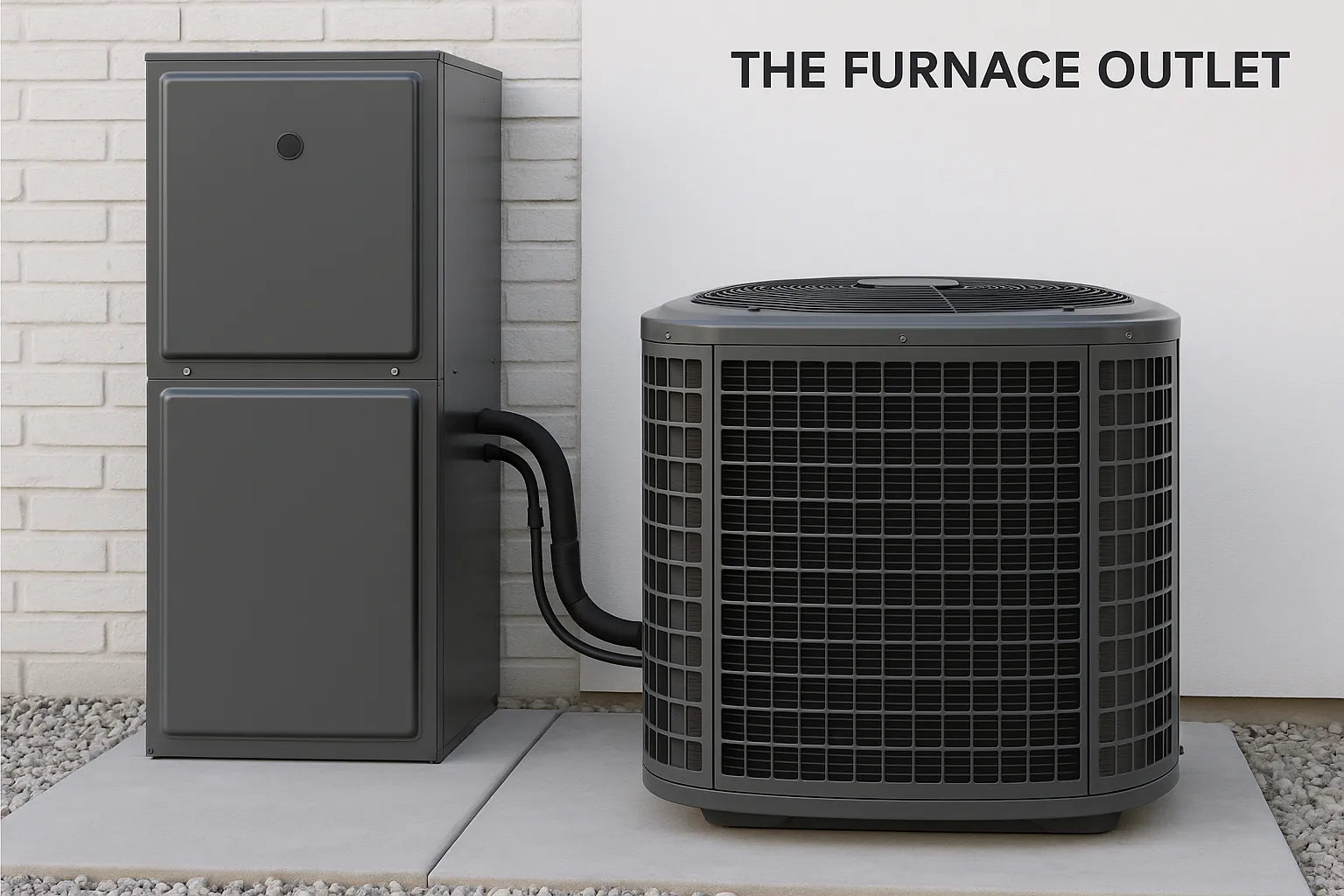Key Takeaways
-
Right AC size + warranty = fewer issues and lower costs
-
Register within 60–90 days or lose half your parts coverage
-
Annual professional maintenance keeps the warranty valid
-
Licensed installation protects comfort and warranty
-
Warranties often transfer—boosts resale value
Why Warranty & Sizing Belong Together
A central air system is a big purchase—usually the second-most-expensive thing in a house after the roof. Most people know the system needs to be the right size for their home, but fewerrealisee that warranty protection depends on sizing and installation choices. In this guide, you’ll learn how manufacturer warranties work, why registration matters, and how mis‑sizing can quietly void coverage. By the end, you’ll know the exact steps a homeowner in the U.S. should take to keep cool and keep their warranty intact.
Get a matched system to keep your warranty intact.
What Your AC Warranty Really Covers
Every major brand promises to replace failed parts like the compressor, condenser coil, and control boards—usually for five years. If you register the equipment on time, parts coverage often doubles to ten years, and some brands even throw in a lifetime compressor guarantee. Labour is a separate story: it may run out after one year or be excluded entirely unless you buy an extended plan. Read the fine print and note which parts, labour hours, and refrigerant charges are listed. This is your safety net when expensive components break.
Registration Rules: Locking In Full Protection
Manufacturers make registration easy—often a quick online form. But if you miss the 60–90‑day window, the warranty reverts to its shorter “base” term. Hold onto the model and serial numbers, proof of purchase, and installer information so you can fill out the form in one sitting. For extra peace of mind, save a PDF confirmation email in cloud storage. Once registered, keep a folder with your paperwork. It will be invaluable if you ever need a compressor replacement three summers from now.
Why Proper Installation Is Non‑Negotiable
An air conditioner is a system of matched parts that must be charged with the right amount of refrigerant and connected to ductwork that meets design airflow. If a licensed technician follows ACCA Manual S and local code, the system will hit its rated efficiency—and keep warranty terms valid. Poor installs lead to low airflow, high static pressure, or line‑set leaks that manufacturers classify as “installation error,” which isn’t covered. Always ask to see your installer’s EPA Section 608 card and state HVAC license.
Maintenance Habits That Keep Your Warranty Alive
Most brands require at least one professional tune‑up each year. A tech will clean coils, check refrigerant charge, test safety controls, and record static pressure. Keep signed service invoices because they’re proof you met the maintenance clause if you file a claim. Between visits, change filters every 30–60 days and keep the outdoor unit clear of leaves. Simple upkeep can cut cooling costs by 15 per cent, and cleaning coils prevents the compressor from overheating.
Match your condenser correctly to avoid voided coverage.
Extended Warranties: Worth It or Waste?
Extended plans usually add labour coverage up to ten years and may reimburse hotel stays during major failures. They make sense if (a) you plan to stay in the home at least a decade, (b) repair labour rates are high in your area, or (c) the plan is backed by the manufacturer rather than a third‑party. Compare the plan cost to the price of one compressor swap and one minor repair. In many cases, paying an extra $350–$500 upfront can shield you from $1,500–$2,000 in labour five years down the road.
Go with a dual-fuel packaged unit to streamline installation and documentation.
How Wrong Sizing Can Void or Shorten a Warranty
Oversized units have short cycles, causing temperature swings and high-pressure spikes that wear out compressors early. Undersized units run non‑stop, overheating motors and evaporators. Either scenario can trigger failures that the manufacturer labels “application error,” leaving you with the bill. Following Manual J load calculations and Manual S equipment selection avoids these pitfalls and can slash energy costs by roughly 20 per cent over the life of the system. Deep dive: Pros and Cons of Different AC Sizes
Transferable Warranties & Home Resale Value
Many brands let you transfer the remaining warranty to a new homeowner if you do so within 30 or 60 days of closing. This can be a subtle but powerful selling point, similar to a roof certification. Provide the buyer with serial numbers, registration proof, and recent service records. Some states even require sellers to disclose HVAC warranty status. A transferable warranty can shave days off time‑on‑market and may boost offers by a few thousand dollars in competitive areas.
For cooling small areas or additions, try a ductless mini‑split that qualifies for a warranty when installed correctly.
Frequently Asked Questions
Q1. What happens if I forget to register my AC unit?
Your parts coverage usually drops from 10 years to 5 years. Labour terms stay the same.
Q2. Does changing my own thermostat void the warranty?
No, but damaging the low‑voltage wires or control board during DIY work can.
Q3. Is refrigerant always covered?
Most warranties cover refrigerant only during the first year. After that, you pay for a recharge unless you bought an extended plan.
Q4. Can I transfer the warranty if I sell my house?
Yes—just file the transfer form (often a small fee) within the deadline set by the manufacturer.
Q5. Does installing a larger filter improve airflow?
Only if the return grille and ducts are sized for it, improper filter upgrades can increase static pressure and strain the blower motor.







